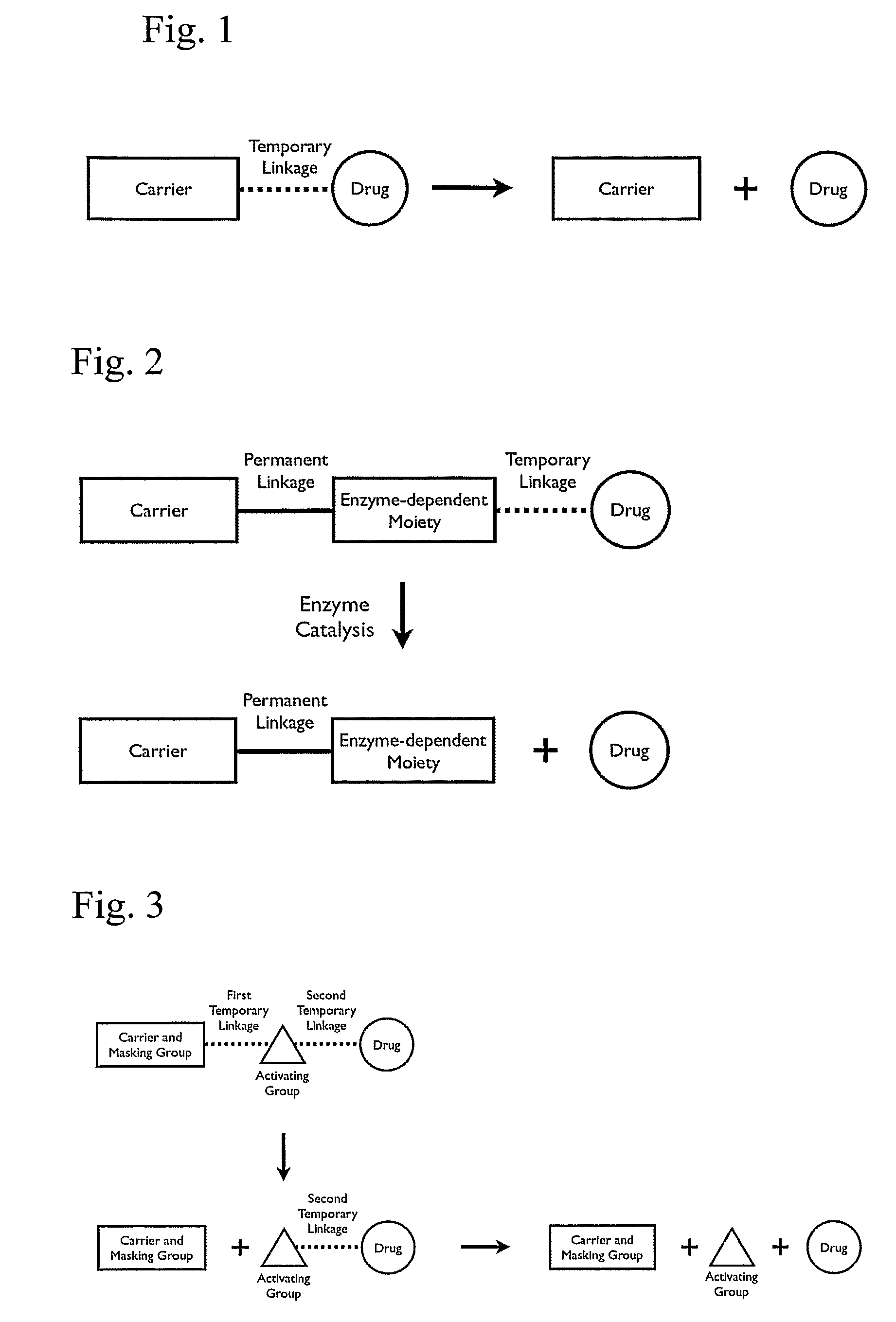Polymeric prodrug with a self-immolative linker
a technology of polymer prodrug and linker, which is applied in the direction of drug composition, peptide, metabolic disorder, etc., can solve the problems of selective targeting cytotoxic, high efficiency of encapsulation, and variability between patients
- Summary
- Abstract
- Description
- Claims
- Application Information
AI Technical Summary
Benefits of technology
Problems solved by technology
Method used
Image
Examples
example
[0174]Materials
[0175]Fmoc-amino acids, resins and PyBOP were purchased from Novabiochem and are named according to the catalogue. Fmoc-Ado-OH was obtained from Neosystem. All additional chemicals were purchased from Sigma Aldrich. Recombinant human insulin was from ICN Biomedicals (USA). Maleimide-PEG5k was obtained from Nektar (USA). 5-(and-6)-carboxyfluorescein succinimidyl ester (mixed isomers) was obtained from Molecular Probes.
[0176]Solid Phase Synthesis Reaction Medium
[0177]Solid phase synthesis was performed on NovaSyn TG Sieber amide resin with a loading of 0.17 mmol / g or 2-chlorotrityl chloride resin with a loading of 1.4 mmol / g. Syringes equipped with polypropylene frits were used as reaction vessels.
[0178]Standard Coupling Cycle for Fmoc-Protected Amino Acids
[0179]For fmoc protecting-group removal, the resin was repeatedly (three times, 4 min each) agitated with 2 / 2 / 96 (v / v / v) piperidine / DBU / DMF and repeatedly (six times) washed with DMF.
[0180]Coupling of fmoc-protected a...
PUM
| Property | Measurement | Unit |
|---|---|---|
| pH | aaaaa | aaaaa |
| diameter | aaaaa | aaaaa |
| diameter | aaaaa | aaaaa |
Abstract
Description
Claims
Application Information
 Login to View More
Login to View More - R&D
- Intellectual Property
- Life Sciences
- Materials
- Tech Scout
- Unparalleled Data Quality
- Higher Quality Content
- 60% Fewer Hallucinations
Browse by: Latest US Patents, China's latest patents, Technical Efficacy Thesaurus, Application Domain, Technology Topic, Popular Technical Reports.
© 2025 PatSnap. All rights reserved.Legal|Privacy policy|Modern Slavery Act Transparency Statement|Sitemap|About US| Contact US: help@patsnap.com



